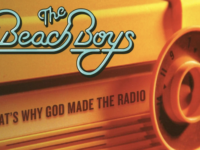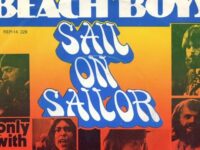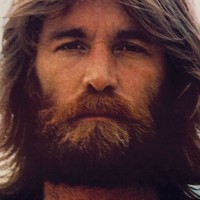News that the Beach Boys were contemplating a reunion to celebrate the band’s 50th anniversary (or not?), got us to thinking …
Think Beach Boys, and many remember a group perhaps irrevocably reduced by its tragicomic storyline.
Admittedly distracting plot points, beyond the 36 Top 40 hits (most of any U.S. rock band), include shocking revelations involving drugs and mental breakdowns, one never-finished Musical Statement, a slow decline into moldy oldies caricature, several different touring ensembles trying to lay claim to the franchise, various resulting suits and countersuits, and a remarkable moment of jackassery at the Rock and Roll Hall of Fame. Fifty years later, too, there is the unironic visage of old men still playing the part of fun shirt-wearing purveyors of a long-gone California surfer lifestyle.
Forget all of that. They remain, at least on the 1960s records, the very sound of summer.
Combining the vocal interplay of the Four Freshmen, erudite rock sensibilities of Chuck Berry and finally the wondrous pop bombast of Phil Spector, the Beach Boys — featuring mastermind Brian Wilson, brothers Carl and Dennis, cousin Mike Love, friend Al Jardine and sidemen including Bruce Johnston — crafted that hall of fame legacy out of this season’s most recognizable attributes: glistening optimism, dreamy romanticism, and unabashed nostalgia.
Aside from “Pet Sounds” and that failed “Smile” project, Brian’s attempts at what he called “teenage symphonies to God,” the Beach Boys were a singles band — and that of course is the currency of the warmer months, a period that’s always all about the now.
Well, and about love, and about water, and about cars too.
 We start with “Surfer Girl,” the first great hit in what became the soundtrack of a modern Manifest Destiny. We restlessly travelled not just across the west but into suburbia via the interstate highway system — and onto a surfboard amid the Pacific waters, even if it was just in our minds.
We start with “Surfer Girl,” the first great hit in what became the soundtrack of a modern Manifest Destiny. We restlessly travelled not just across the west but into suburbia via the interstate highway system — and onto a surfboard amid the Pacific waters, even if it was just in our minds.
An inspired update of Jiminy Cricket’s “When You Wish Upon A Star” that peaked at No. 7 in 1963, “Surfer Girl” envelopes you in the twilight longing that inevitably follows such a journey.
“Little Deuce Coupe,” a doo-wop influenced car song co-written with Roger Christian, revved things up again — hitting No. 4 almost simultaneously. What made Brian’s work with the Beach Boys matter the most was its oceanic ebb and flow.
Next comes 1963’s Top 5 “Surfin’ USA,” a Love-led reworking of Berry’s “Sweet Little Sixteen” that name-dropped a series of familiar California wave-catching spots. Then you have “In My Room,” from 1963, this still-wrenching ode to youthful isolation.
There followed the confection of 1964’s “Fun, Fun, Fun,” again with Love on lead vocal. The tune went to No. 5, standing toe-to-toe with celebrated contemporary pop successes of the Beatles. Christian also assisted with the charming “Don’t Worry, Baby.” “I Get Around” subsequently chugged its way to the top spot in June 1964.
Some summer sounds come and go: Cicadas, Weed Eaters, Ricky Martin. Not these. Cue them up, and the sun is always shining.
Throughout, a series of memorable girls — Rhonda, Barbara Ann, these West Coast lovelies — also work as soft soil for Brian’s blossoming imagination.
“Help Me Rhonda” would become the group’s second No. 1 song, pushing the Fabs’ “Ticket to Ride” out of the top spot in 1965. Then there was a cover of the Regents’ “Barbara Ann,” featuring Dean Torrence of Jan and Dean. “California Girls,” a No. 3 hit in 1965 with Love on lead, at first seemed like a brightly reflective paean to local distractions, but a closer examination reveals this randy bohemism: Actually, the Beach Boys just wanted to bring whomever they could back home with them.
What can be more summer than that?
In 1966, the No. 8 hit “Wouldn’t It Be Nice” at first drew some radio-station bannings because of its reference to saying goodnight and staying together. You get the sense, however, that this is a song with a post-Labor Day theme of lost, misunderstood love — an autumnal dream pined for away from “the kind of world where we belong.” (The flip side, “God Only Knows” featuring Carl on lead, only reached No. 39 — not enough cars, perhaps; certainly not enough surf — but was hailed by Paul McCartney as the greatest love song ever written.)
Finally, we offer as this band’s seasonal epic the carefully constructed “Good Vibrations.”
Recorded in 17 different sessions in four Los Angeles studios at a cost of more than $16,000, “Vibrations” begins with a compact, soaring hopefulness, but then widens into a thrillingly contemplative daydream. It married psychedelia and pop, but also sold and sold and sold. That makes “Vibrations” important, even today. This was the Beach Boys’ first million-selling single, hitting No. 1 in 1966.
And it was The Beach Boys’ zenith, a shimmering rock opera of unrelated, but still interlocking parts — like June, July and August.
- How Deep Cuts on ‘Music From Big Pink’ Underscore the Band’s Triumph - July 31, 2023
- How ‘Islands’ Signaled the Sad End of the Band’s Five-Man Edition - March 15, 2022
- The Band’s ‘Christmas Must Be Tonight’ Remains an Unjustly Overlooked Holiday Classic - December 25, 2016




